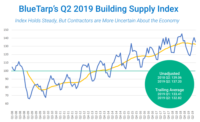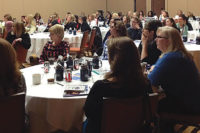by Brian Beaulieu, CEO - ITR Economics
The economy is experiencing some weakness. ITR Economics is forecasting that there is business cycle rise ahead. We are beginning to see some early signs of rise in several reliable leading indicators in the U.S. and in Europe. As yet, the leading indicators for China, Canada and Brazil are not indicating that an upturn is nearing just yet.
The weakness in the U.S. is evident in capital-good new orders running below year-earlier levels. It is not just the oil patch contributing to the softness in new orders. However, the economic softness seems to be mostly of a business-to-business nature. The consumer is spending a lot of money and employment is growing with more gains on the horizon.
The world’s economy would be in a lot more trouble right now if it wasn’t for the ongoing capability and desire of the U.S. consumer to spend money.
The tentative improvement in the U.S. leading indicators and in those of Europe means we will likely see business cycle improvement in North America and in Europe in 2016. As these two economies accelerate in their respective growth rates, we will see upside business cycle changes occurring on a lagging basis for Canada, South America and Asia. An upturn in these latter economies will likely be tied to a rising trend in commodity prices in 2016 as global demand slowly improves, forming a positive feedback loop for South America
in particular.
There is a period of business cycle rise coming for Asia, led by China and Japan. However, the onset of rise will follow that of the U.S. and Europe. Don’t look for growth rates in the region to be as strong as what occurred over the last several business cycles. Both China and Japan are experiencing structural economic problems in the form of debt, demographics and a reliance on the outside world. You will likely find easier, more profitable opportunities in North America than you will in Asia through the coming year unless you are gaining market share.
Weakening U.S. dollar
The U.S. dollar (USD) will likely be in a new trend for 2016. The need for safety in the form of holding the USD will diminish as business cycle gains become more the norm for the global economy and as the fear of deflation dissipates. A weakening of the USD in 2016 will give exporters some price relief but it will also create an environment in the U.S. more prone to inflation percolating in segments of the economy. The latter situation will give the U.S. Federal Reserve license to increase interest rates. We expect the rising trend in interest rates to initially be gradual. A gradual ascent is not going to have an immediate, detrimental impact on the economy. However, if interest rates keep rising beyond 2016 and if the rising trend escalates, the cumulative effect will likely be adverse for residential construction with a normal downside rippling effect following through the rest of the economy.
The business cycle rising trend of 2016 won’t be evenly felt across countries or across markets within countries. Cyclical rise will create stresses within businesses unless you, your vendors, or your customers are prepared for the upturn. Chances are some part of the supply chain or the end-user will create stress points stemming from upside business cycle activity. Now is the time to ask yourself if you have enough people (a resource that will be in an ongoing short-supply situation), capital and equipment.
Stay tuned
Stay tuned to see how the leading indicator and market trends develop both here in the U.S. and abroad so that you can effectively grow your bottom line.









